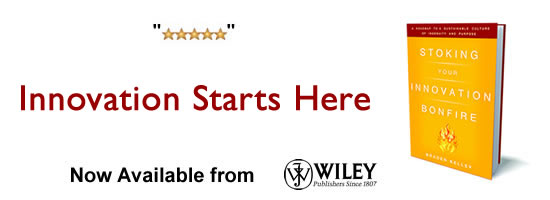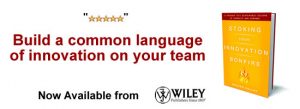Innovation Lessons from the Six Rules of Urban Planning
 Anyone who has enjoyed a long walk through the pleasant streets of Greenwich Village in New York may have Jane Jacobs to thank. Among the most brilliant thinkers in the area of city planning and architecture, Jacobs in 1961 wrote the book The Death and Life of Great American Cities. Jacobs wrote that the Modernist movement, which had called for the demolition of old neighborhoods, replacing them with soulless, giant concrete buildings, was making cities worse rather than better. Traditional cities with their narrow streets, wide sidewalks, and mixed-use sets of buildings provided a sense of community and facilitated interactions between residents in a way that improved the lives of everyone in the area. Jacobs called for planners “to foster lively and interesting streets†which would create “a feeling for the public identity of people, a web of public respect and trust, and a resource in time of personal and neighborhood need.â€
Anyone who has enjoyed a long walk through the pleasant streets of Greenwich Village in New York may have Jane Jacobs to thank. Among the most brilliant thinkers in the area of city planning and architecture, Jacobs in 1961 wrote the book The Death and Life of Great American Cities. Jacobs wrote that the Modernist movement, which had called for the demolition of old neighborhoods, replacing them with soulless, giant concrete buildings, was making cities worse rather than better. Traditional cities with their narrow streets, wide sidewalks, and mixed-use sets of buildings provided a sense of community and facilitated interactions between residents in a way that improved the lives of everyone in the area. Jacobs called for planners “to foster lively and interesting streets†which would create “a feeling for the public identity of people, a web of public respect and trust, and a resource in time of personal and neighborhood need.â€
These ideas about how cities can self-organize ran counter to the prevailing orthodoxy of the Urban Renewal movement and had a profound impact on city planning, new development, and architecture. Among those who were influenced by Jane Jacobs were the architects Andres Duany and Elizabeth Plater-Zyberk. Their architectural firm, DPZ, developed the famous Seaside community in Florida that set the standard for how to escape the typical cul-de-sac suburban development while leveraging the aspects of a city that prove most valuable. DPZ developed a set of six principles for city design based on their observations of various successful towns but perhaps best demonstrated by Alexandria, Virginia and referred to as the “Alexandria rules.â€Â For the student of innovation, these six rules can be analyzed to show how just as community interactions in proper cities improve overall outcomes, so, too, can the right innovation program parameters lead to better performance in developing new ideas.
Rule 1 – “[T]he community [must have] a ‘clear center,’ where the ‘civilized activity’ of ‘commerce, culture, and governance’ takes place.â€
In this rule, DPZ is focusing on the importance of having a well-defined central location for a community. This can be of interest to the innovation practitioner because of the increasing challenge of mobile workers and dispersed corporate locations. Although some companies continue to follow the old model of a traditional corporate headquarters, this may be the exception rather than the rule and it is important that we not lose sight of the need for a central location in which employees can interact to exchange ideas and develop new thinking to overcome challenges that their companies face. Even a centralized research and development (R&D) group may suffer from the fact that it is remote from the rest of the company, which creates gaps in communication. Centralization is important and should not be overlooked in innovation.
Rule 2 – “[A]ll ‘the ordinary needs of daily life’ lie within a five-minute walk from people’s homes, mostly or completely eliminating the need to drive.â€
DPZ here is focused on how a walkable community has advantages over ones that require driving a car to get to places providing the needs of daily life (grocery stores, restaurants, etc.). For the innovation practitioner, one could think about how to integrate innovation discussions into the needs of daily life as they relate to a corporate setting, such as innovation-themed brown bag lunches, communications material in public spaces such as coffee shops, kitchen areas, break rooms, elevators, cafeterias or credit unions, or even innovation events in places where people tend to congregate. Getting people to think about innovation in a non-obtrusive way as they make their way through their workday can help foster new thinking and creative ideas. Likewise, just as walking in a community is a good means of exercise, so, too, could walking from a workplace to lunch (a daily need) engender communications between different employees, particularly if the innovation practitioner takes the time to facilitate these discussions.
Rule 3 – “[T]he community has a street network of small blocks—a ‘continuous web’ making walking easy.â€
This rule focuses on the design of the community to ensure that the proper pathways are in place to ensure free movement of people throughout an area. Although building architects might not be too keen to welcome input from an innovation leader concerning campus design, an innovator could nonetheless spend time thinking about how people are interacting across a corporation to find areas where innovation-themed discussions can take place. Investing time to observe where people congregate, how they arrive to and from their cars (or mass transit), which groups tend to congregate at social or other activities, can all be useful when trying to find ways to leverage the collective knowledge of the organization in trying to solve problems.
Rule 4 – “[I]t has ‘narrow, versatile’ streets, with wide sidewalks, parallel parking, and active storefronts, providing for slow car speeds and a rich pedestrian life.â€
For this rule, DPZ is reversing a trend that had become prominent in cities in which the space allocated to automobiles (streets and parking) grew larger and larger, effectively displacing the pedestrians from the community. The innovation leader can use this example as a tool of thought when attacking an innovation challenge by reversing the priority 180 degrees to see if focusing on a completely different aspect of the problem leads to new thinking about how to deliver innovative solutions. Just as DPZ concluded that the car should adapt to the community (not the other way around), so, too, can the innovation practitioner flip a scenario on its head to see what novel solutions may appear.
Rule 5 – “[I]t is mixed use, and yet is ‘not a design free for all,’ as types of buildings, and their implied uses, tend to cluster together—but it is the building type, not the use, that determines the clustering.â€
DPZ here focuses on the importance of balancing the advantages of mixed use while still adhering to a design aesthetic of having similar-looking buildings in the same area. For the innovation practitioner, this balance could be struck between getting messaging out to diverse groups in order to obtain a diversity of opinions while not doing so in a way that seems ill-organized or disjointed. For instance, a problem that needs to be solved in the accounting area that needs innovation applied to come up with possible solutions may not be well-suited to the sales group, although we can sometimes be surprised when a person from a completely different group recognizes a common theme and applies a solution from his or her area to solve a problem in a completely unrelated area.
Rule 6 – “[I]t sets aside ‘special sites for special buildings’ such as churches and civic buildings ‘that represent the collective identity and aspirations of the community.â€
This final rule from DPZ yields insights concerning an often overlooked aspect of innovation. DPZ notes that building a purely utilitarian community focused on commerce and residences alone would leave the community lacking in the areas of spirituality and civic duty. The parallel for the corporate innovator is the challenge of ensuring that there is a common mission or purpose aligned with one’s efforts, whether this is a corporate transformational program (typically with a future date and vision) or a charismatic leader who inspires his or her employees to do great things beyond simple marginal improvements to the bottom line. The goal could be, as articulated by the architect Charles Mulford Robinson and referenced in Wade Graham’s Dream Cities, to develop “happier people of the rising City Beautiful [who] will grow in love for it, in pride in it [… and who] will be better citizens, because [they are] better instructed, more artistic, and filled with civic pride.â€
Modern Street with Wide Sidewalks in Jerusalem

Ancient Roman Street in Jerash with Sidewalk

Sources:
Photographs Courtesy of the Author
Jane Jacobs, The Death and Life of Great American Cities (New York: Vintage Books, 1992)
Wade Graham, Dream Cities: Seven Urban Ideas That Shape the World (New York: Harper Collins, 2016).
Wait! Before you go…
Choose how you want the latest innovation content delivered to you:
- Daily — RSS Feed — Email — Twitter — Facebook — Linkedin Today
- Weekly — Email Newsletter — Free Magazine — Linkedin Group
 Scott Bowden is an independent innovation analyst. Scott previously worked for IBM Global Services and Independent Research and Information Services Corporation. Scott has PhD in Government/International Relations from Georgetown University.image credit: bgr.com
Scott Bowden is an independent innovation analyst. Scott previously worked for IBM Global Services and Independent Research and Information Services Corporation. Scott has PhD in Government/International Relations from Georgetown University.image credit: bgr.com
NEVER MISS ANOTHER NEWSLETTER!
LATEST BLOGS
Starbucks and Big Tobacco
Back in the 1950’s smoking was glamorous, and just about everybody who was anybody smoked cigarettes. Then came the discovery, to the shock of millions, that sucking smoke into your lungs might not be good for you. Then came another revelation that one of the substances in tobacco, nicotine, which was used as a poison by the Egyptians during the times of the Great Pyramids, is addictive. People then began a mass exodus from the consumption of nicotine via inhaled smoke.
Read MoreWal-Mart Goes Green – What about your company?
With the price of gas above $3.00, some companies (and hopefully all) are beginning to look at the fuel efficiency of their fleets. Wal-Mart is the most public example of this with its trucking fleet. Its efforts include:
Read More



